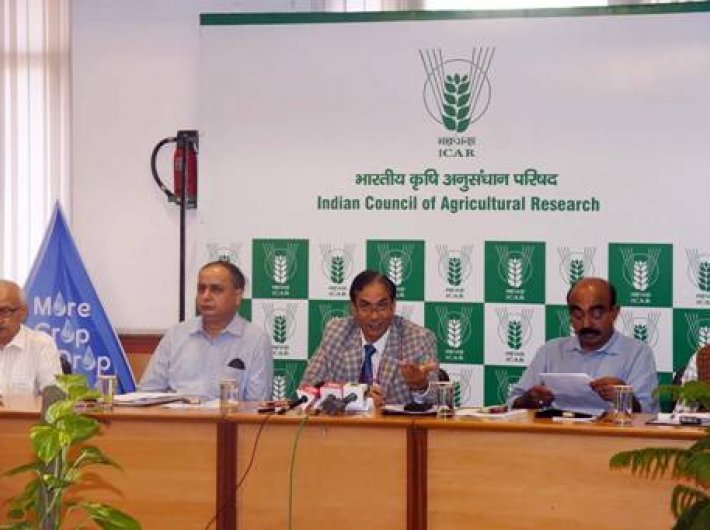Scheduling irrigation, constructive use of water, proper crop selection and utilising modern irrigation technologies will help enhance water security while also ensuring a high agricultural productivity, says T. Mohapatra, director general of the Indian Council of Agricultural Research (ICAR).
Addressing a press meet here Thursday, he was highlighting the efforts of ICAR in scientific water management in line with the Jal Shakti Abhiyan. He added that after the launch of the Jal Shakti Abhiyan by Prime Minister Narendra Modi, over 10.8 crore farmers have been trained through the Krishi Vigyan Kendras and 371 melas have been conducted across the country from July 1 till early September.
Detailing the benefits of several water conservation methods, Mohapatra, who is also Secretary, Department of Agricultural Research and Education (DARE), said that about 35-40% water could be saved and 20-25% reduction in fertilizer use could be ensured by the scheduling of irrigation. Moisture sensors and automated irrigation systems which can be controlled by a farmer using mobile phone will help in deciding the time and amount of irrigation to be carried out. Constructive use of water, which includes use of recycled water and proper selection of crops, also helps in enhancing water security. Alternatives like cultivation of fruits, millets, bajra and selection of proper varieties of crops also ensure constructive utilisation of water. Using bio mulch and hydro gels which ensure slow release of water and utilising microbes that help in efficient absorption of water will help in further ensuring reduced and proper utilisation of water in agriculture.
The states have prepared district irrigation plans based on the technical support from ICAR for implementation under the Pradhan Mantri Krishi Sinchayee Yojana (PMKSY), so that the slogan ‘Har khet ko pani’ may be translated into reality. ICAR also contributed in preparing state-specific action plans for scientific assessment of the supply and demand side of water resources and vulnerability to climate change under the National Water Mission. This will help to formulate annual state/union territory water budgets and hence, allocation and efficient utilisation of available water resources.
Mohapatra told mediapersons that the government was taking steps to ensure that groundwater usage for irrigation is reduced. Water is the critical input of agriculture and about 80% of the current water use is drawn by agriculture. Out of 140 million ha of net sown area in the country, net irrigated area accounts about 68.38 million ha (48.8%) and remaining 51.2% is under rainfed. Out of the net irrigated area, about 40% is irrigated through canal systems and 60% is irrigated through groundwater. An important challenge facing the irrigation sector in India is the growing gap between Irrigation Potential Created (IPC) and Irrigation Potential Utilized (IPU), and uneven distribution of water over the length of the canal system. The overall irrigation efficiency of the major and medium irrigation projects is estimated to be around 38%. The efficiency of surface irrigation system can be improved from about 35-40% to around 50-60% and that of groundwater from about 65-70% to 72-75%.
He added that low irrigation efficiency (35-40%), inequity in water distribution, mismatch between irrigation water supply and crop water demand, tail enders deprivation, irrigation induced salinity and waterlogging are some of the major challenges being faced in the canal commands. Similarly, in the groundwater irrigated command, indiscriminate withdrawal of groundwater has resulted in decline of groundwater table in north-western and southern regions. Contrary to this, the groundwater development in the eastern region is sub-optimal. The stage of groundwater development in India is 63.3%. However, it is 166%, 140%, 137% and 120% in states of Punjab, Rajasthan, Haryana and Delhi, respectively, which has serious negative consequences.
India with a geographical area of 328 M ha supports more than 18% of the world’s population, but has only 4.2% of freshwater resources. The country receives annual precipitation (including snowfall) of almost 4,000 billion cubic metres (BCM), which results into estimated average water potential of 1,869 BCM. Per capita annual water availability has declined from 5,177 m3 in 1951 to 1,508 m3 by 2014 and likely to reduce further to 1,465 m3 and 1,235 m3 by 2025 and 2050, respectively. The situation may further deteriorate, if anticipated impact of climate change on hydrology and water resources are also considered.
